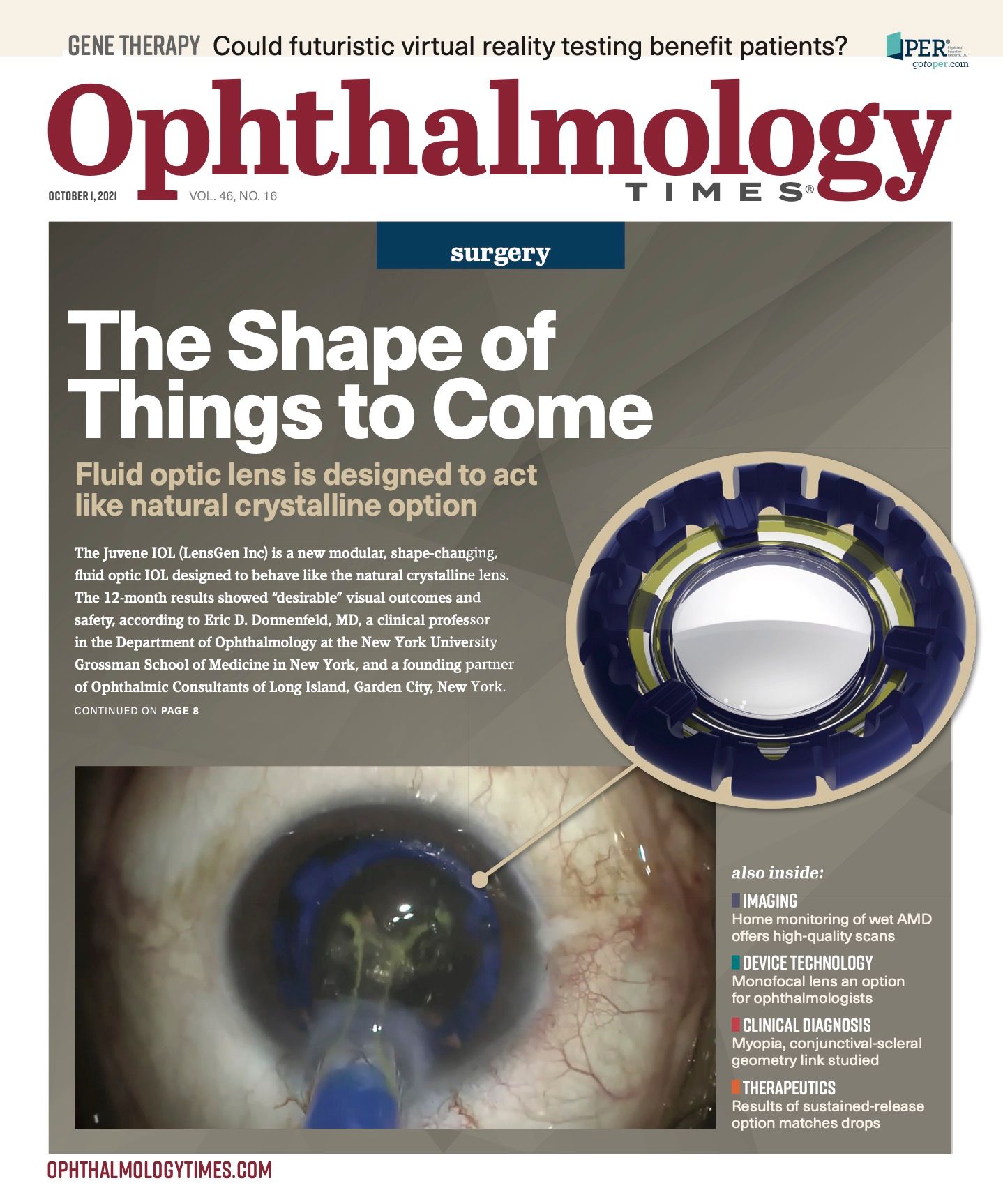Publication
Article
Digital Edition
Study examines VR orientation, mobility testing
Author(s):
Improvements are seen after gene therapy for Leber congenital amaurosis.

Reviewed by Tomas Aleman, MD
Patients treated with gene therapy for severe inherited retinal diseases may eventually have access to a virtual reality (VR) system that can measure their functional vision and their improved visually guided navigation in the clinic and real-world settings, according to Tomas Aleman, MD, from the Scheie Eye Institute at the Perelman Center for Advanced Medicine, University of Pennsylvania, Philadelphia.
Aleman is one of the coauthors on intellectual property describing the VR mobility test (PCT/US2019/029173).
He pointed to the success achieved in phase 3 clinical trials of gene therapy treatments for patients with visual loss resulting from the RPE65 gene mutation in Leber congenital amaurosis (LCA); that success was then extended to other inherited retinal disorders.
Related: Virtual reality simulator will boost retinal surgery training
According to the team, the hope is that these advances will result in clinically available therapies.
However, the investigators emphasized, an interim step is “a need for testing paradigms that can quickly, accurately, and reproducibly define the level of visual function” in settings such as clinical trials and clinic settings and determine patients’ functional vision.
According to Aleman, the investigators maintain that there is great promise for use of such a system in vision research and visual rehabilitation considering the commercial availability of consumer headsets. They reported their results recently in Clinical Ophthalmology.1
The study
The investigators from the United States and Belgium developed a VR orientation and mobility testing protocol and algorithm using commercially available VR hardware and evaluated the protocol’s usefulness in patients with LCA and controls with normal vision.
Seven controls ranging in age from 10 to 35 years and 3 patients with LCA ranging in age from 7 to 18 years were included in the study.
Two of the patients with LCA were tested before and after having undergone gene therapy.
Perimetry and full-field sensitivity testing were performed for the patients and the VR orientation and mobility parameters were correlated with the patients’ visual dysfunction, according to Aleman.
During the study, the subjects negotiated mobility and VR courses and were graded based on their performances.
The visual acuities in the patients with LCA were below 20/200, the dark-adapted sensitivity losses exceeded 5 log units, and the visual fields were constricted from 20 to 40 degrees.
Related: Gene therapy sparks foveal morphologic changes in LCA
Aleman explained that before undergoing gene therapy, patients required about a 1000-fold brighter environment to navigate, had at least 4 times more collisions, and were slower in orienting and navigating compared with the control subjects.
After treatment, patients experienced improvements in cone-mediated (by 1 to 2 log units) and rod-mediated (by > 4 log units) sensitivities that resulted in fewer collisions by at least half at about 100-fold dimmer luminance levels, and 4 times faster navigation times.
This type of testing, the authors wrote, will provide much needed flexibility in its deployment and in the possibility to test various visual attributes that may be affected by gene therapy in the setting of translational studies.
“Our preliminary work justifies the investment in time and resource needed to validate the reliability and variability of results,” Aleman said. “These were obtained in the [VR orientation and mobility] protocol as an end point of functional vision in larger populations of normally sighted subjects and patients with [inherited retinal diseases] both prior to and concurrent with implementing this test in a clinical trial.”
Related: Ocular findings reported in case of siblings with LCA
The investigators concluded that the study “provides proof-of-concept data in support for the use of a [VR] orientation and mobility test to quantify the impact of the disease and of treatments thereof on functional vision in inherited retinal degenerations.”
---
Tomas Aleman, MD
E: aleman@pennmedicine.upenn.edu
Aleman has no financial disclosures related to the content.
--
Reference
1. Aleman TS, Miller AJ, Maguire KH, et al. A virtual reality orientation and mobility test for inherited retinal degenerations: testing a proof-of-concept after gene therapy. Clin Ophthalmol. 2021;15:939-952. doi:10.2147/OPTH.S292527

Newsletter
Don’t miss out—get Ophthalmology Times updates on the latest clinical advancements and expert interviews, straight to your inbox.





